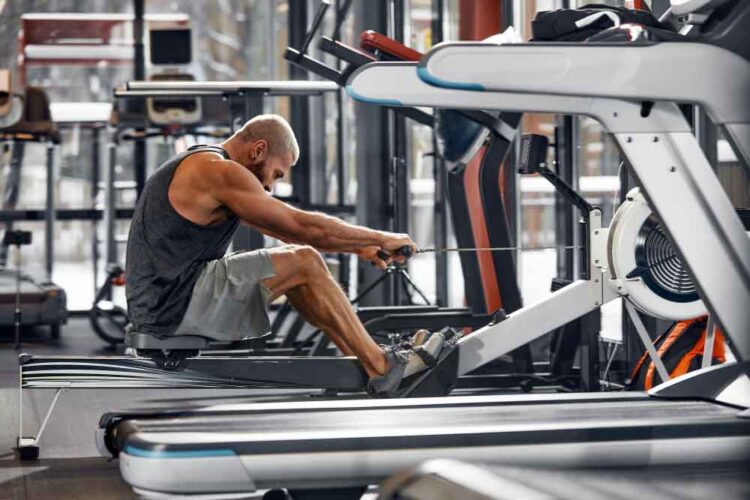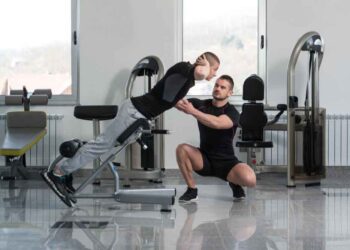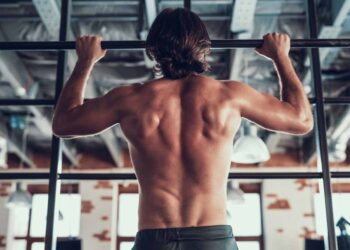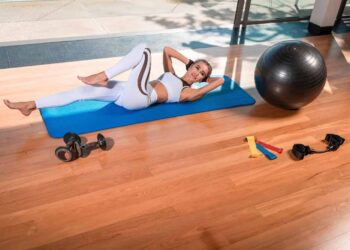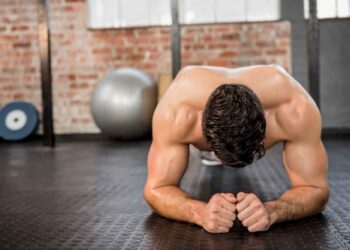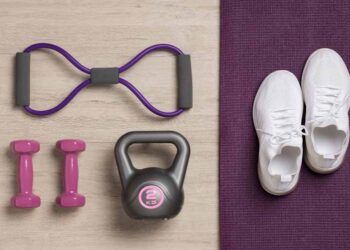Are you looking for a low-impact, full-body workout that engages multiple muscle groups simultaneously? Want to discover the secrets of rowing techniques and reap the numerous benefits of this exhilarating sport? Whether you’re a beginner or an experienced fitness enthusiast, rowing may be the perfect exercise for you. But how do you get started? And what are the key elements of proper rowing form? Let’s dive in and explore everything you need to know about rowing!
Key Takeaways:
- Rowing is a low-impact, full-body workout that engages the legs, core, arms, and more.
- Understanding the three main components of rowing form – legs, body, and arms – is essential.
- Practicing rowing form in isolation and integrating drills can significantly improve rowing technique.
- Mastering the mechanics of rowing, including the four stages of the rowing stroke, is crucial.
- Proper rowing equipment setup, including damper settings and foot pedal adjustments, is vital for a comfortable and effective workout.
Introduction to Rowing Form
Understanding Rowing begins with mastering the essential components of Rowing form: legs, body, and arms. Each component plays a critical role in generating power and propelling the boat forward. To achieve optimal technique and performance, it’s important to focus on proper form and alignment.
At the beginning of each stroke, positioning your body correctly is crucial. Start with a tall and neutral spine, maintaining an upright posture. With bent knees and extended arms, you are ready to initiate the stroke in the “Catch” position. This initial setup allows for maximum power generation from the legs, which generate the most force compared to the body and arms.
Practicing Isolation and Integration Pick Drills can significantly enhance your rowing technique and flow. Isolation Pick Drills allow you to concentrate on mastering each component individually. Start by focusing on leg drive, followed by the body swing, and finally, arm pull.
Integration Pick Drills, on the other hand, emphasize the seamless integration of the three components. This type of drilling helps you improve your ability to transition smoothly from one component to another, ensuring a fluid stroke.
With consistent practice and attention to detail, you’ll develop a solid foundation in rowing form, allowing you to execute powerful and efficient strokes on the water or the rowing machine. Remember, Rowing is a sport that requires a combination of strength, endurance, and precision. Mastering the fundamentals is key to achieving optimal performance and enjoying the full-body benefits of rowing.
The Mechanics of Rowing
Understanding the mechanics of rowing is essential for mastering this full-body workout. The rowing stroke consists of four distinct stages, each playing a crucial role in achieving an efficient and powerful stroke. Let’s dive deeper into the mechanics of rowing and explore each stage in detail.
The Catch
The Catch is the starting position of the rowing stroke. This is where the rower positions the oars in the water to initiate the drive. It is crucial to have proper form at the Catch, with the legs compressed, the torso leaning slightly forward, and the arms fully extended. This position allows for maximum power transfer throughout the stroke.
The Drive
The Drive is where the rower generates power against the resistance of the water. It involves three major components: the legs, body, and arms. During the Drive, the rower pushes with the legs, extending them explosively, while simultaneously swinging the body back and pulling the arms with force. The power generated in this stage is transferred to the oars, propelling the boat forward.
The Finish
The Finish marks the end of the stroke. In this stage, the rower completes the drive by extending the legs fully, keeping the torso upright, and pulling the handle to the chest. This position allows for leverage and maximizes power output, ensuring a strong finish to the stroke.
The Recovery
The Recovery is the reverse motion from the Finish back to the Catch. It is a crucial stage that allows the rower to reset and prepare for the next stroke. During the Recovery, the rower extends the arms, swings the body forward, and finally bends the knees to return to the compressed position at the Catch.
Proper form and sequencing of these stages are fundamental to achieving an efficient rowing stroke. Understanding the movement patterns and how each stage contributes to the overall stroke mechanics is key to optimize performance and prevent injuries.

The image above showcases the different stages of the rowing stroke, illustrating the catch, drive, finish, and recovery positions. This visual representation can further enhance your understanding of rowing mechanics and serve as a valuable reference during your rowing sessions.
Now that we’ve covered the mechanics of rowing, let’s move on to the next section and explore the equipment and set-up needed to get started with rowing effectively.
Rowing Equipment and Set-Up
When it comes to rowing, having the right equipment and proper set-up is crucial for an effective and enjoyable workout. Let’s explore the key elements of rowing equipment and how to optimize your set-up for maximum performance.
Rowing Machines
Rowing machines, also known as ergometers or ergs, are designed to simulate the action of rowing a boat. They provide a low-impact, full-body workout that engages multiple muscle groups. Whether you choose a Concept2, WaterRower, or another reputable brand, make sure the machine is sturdy and well-maintained for safe and effective rowing sessions.
Damper Setting
The damper setting on a rowing machine controls the amount of air allowed into the flywheel, impacting the resistance you feel during your stroke. Understanding how to adjust the damper setting is essential for tailoring your workout to your fitness level and goals. Damper setting should be adjusted based on your preference and the type of workout you want to achieve. A higher damper setting increases the resistance, making your strokes more challenging, while a lower damper setting reduces the resistance, allowing for a smoother and faster stroke. Damper setting varies from person to person, so experiment with different levels to find what feels comfortable and challenging for you.
Foot Pedal Adjustment
Proper foot pedal adjustment is critical for stability and correct rowing technique. When adjusting the foot pedals, ensure that the straps comfortably secure your feet while allowing for natural movement. Your feet should be firmly planted and positioned at the center of the pedals. Foot pedal adjustment helps prevent unnecessary strain on the ankles and enables you to generate optimal power from your legs, resulting in more efficient strokes.
Handle Grip
The way you hold the rowing machine handle can significantly impact your performance and comfort. Avoid gripping the handle too tightly with your palms, as this can lead to increased fatigue and tension in your forearms and wrists. Instead, aim for a loose grip, with the handle resting in your fingertips. Maintain a relaxed yet controlled grip to enhance your control and minimize discomfort during your rowing session. Handle grip in the fingers, not the palm, promotes proper hand positioning and creates a more efficient connection between your upper body and the handle.
Summary
Understanding the importance of rowing equipment and set-up is essential for getting the most out of your rowing workouts. Optimize your performance by choosing a reliable rowing machine, adjusting the damper setting to your preference, ensuring proper foot pedal adjustment for stability and technique, and holding the handle with a loose grip in your fingers. With the right equipment and set-up, you’ll be well on your way to enjoying the full-body benefits of rowing.
| Rowing Equipment | Set-Up Tips |
|---|---|
| Rowing Machine | Choose a reputable brand and ensure the machine is well-maintained |
| Damper Setting | Adjust based on preference and desired resistance level |
| Foot Pedal Adjustment | Securely position feet for stability and optimal technique |
| Handle Grip | Hold the handle with a loose grip in the fingers for better control |
Beginner’s Workout
Are you new to rowing and looking for a beginner’s workout to kickstart your fitness journey? Look no further! This workout is designed to introduce you to the basics of rowing while helping you build endurance and improve your cardiovascular health.
Welcome to the Rowing Machine
To begin, hop onto the rowing machine and set the damper setting to 5 or below. The damper setting adjusts the resistance, and for beginners, a lower setting will allow you to focus on mastering the technique without straining your muscles.
Next, pay attention to your strokes per minute (SPM), which refers to the number of times you complete a full rowing motion in one minute. For this workout, aim for between 22 and 26 SPM. This range is ideal for beginners to maintain a steady pace and focus on their technique.
A 10-Minute Session
Now that you’re all set up, let’s dive into the workout! Start with a 10-minute session on the rowing machine. This duration is perfect for beginners, providing a substantial workout without overwhelming your body.
Focus on maintaining proper form throughout the workout. Remember, the three main components of rowing form are the legs, body, and arms. Engage your leg muscles as you push off the foot pedals, followed by smoothly swinging your body backward and finally pulling the handle towards your chest using your arms.
Try to establish a rhythm as you row, finding a comfortable pace that allows you to maintain consistency and control. Pay attention to your breathing and find a steady pattern that suits you.
As a beginner, it’s crucial to listen to your body and not push too hard. Take breaks if needed, and gradually increase the intensity and duration of your workouts as you build endurance and confidence.
Benefits of the Beginner’s Workout
This beginner’s workout on the rowing machine offers numerous benefits. It serves as an excellent warm-up before strength training sessions, helping to activate your muscles and increase blood flow. Additionally, it can be considered a standalone cardio workout, providing a low-impact option to get your heart rate up and burn calories.
The rowing machine engages multiple muscle groups, including your legs, core, back, and arms, making it a full-body workout. This helps improve strength, endurance, and overall fitness levels.
Remember, consistency is key. Incorporate this beginner’s workout into your routine a few times a week, gradually increasing the duration and intensity. With time and practice, you’ll develop proper rowing technique, build endurance, and reap the benefits of this fantastic form of exercise.

| Workout Breakdown | Details |
|---|---|
| Duration | 10 minutes |
| Damper Setting | 5 or below |
| Strokes per Minute (SPM) | 22-26 |
| Purpose | Warm-up, cardio, beginner’s workout |
| Benefits | Full-body workout, improved endurance, cardiovascular health |
Getting Started with Rowing
If you’re new to rowing, it’s beneficial to have an experienced friend or mentor to guide you along the way. They can provide valuable insights and help you develop proper rowing technique. One popular option for learning rowing techniques is using a single man pontoon boat while fishing. This type of boat is stable and allows for easy maneuvering on the water.
Learning how to back row is an essential skill for rowing safely and efficiently. Back rowing involves using oar strokes in a backward motion to propel the boat. By mastering back rowing, you can navigate through tight spaces, avoid obstacles, and maintain control of the boat at all times.
Steering is another crucial aspect of rowing. To steer the boat, you perform back row motions on one side. This causes the boat to move in that direction. By alternating back row strokes on each side, you can maneuver the boat and adjust its course as needed. It’s important to make constant adjustments with the oars to keep the boat facing the current or desired direction.
By incorporating these skills into your rowing practice, you’ll develop a strong foundation and gain confidence on the water. Remember to always prioritize safety and gradually increase the difficulty of your rowing sessions as you become more comfortable and proficient.
| Pros of using a single man pontoon boat for rowing: | Cons of using a single man pontoon boat for rowing: |
|---|---|
| Stability on the water | Limited storage space |
| Easy maneuverability | May not be suitable for rough waters |
| Great for practicing rowing techniques | Not ideal for rowing with a partner |
Conclusion
Understanding rowing and developing rowing skills require time and practice. It is crucial to focus on the fundamentals, such as back rowing and proper steering, before advancing to more complex techniques. By consistently practicing rowing form and technique, you can improve your skills and experience the full-body benefits of rowing. So, grab your oars, put in the effort, and enjoy the journey of mastering the art of rowing!

